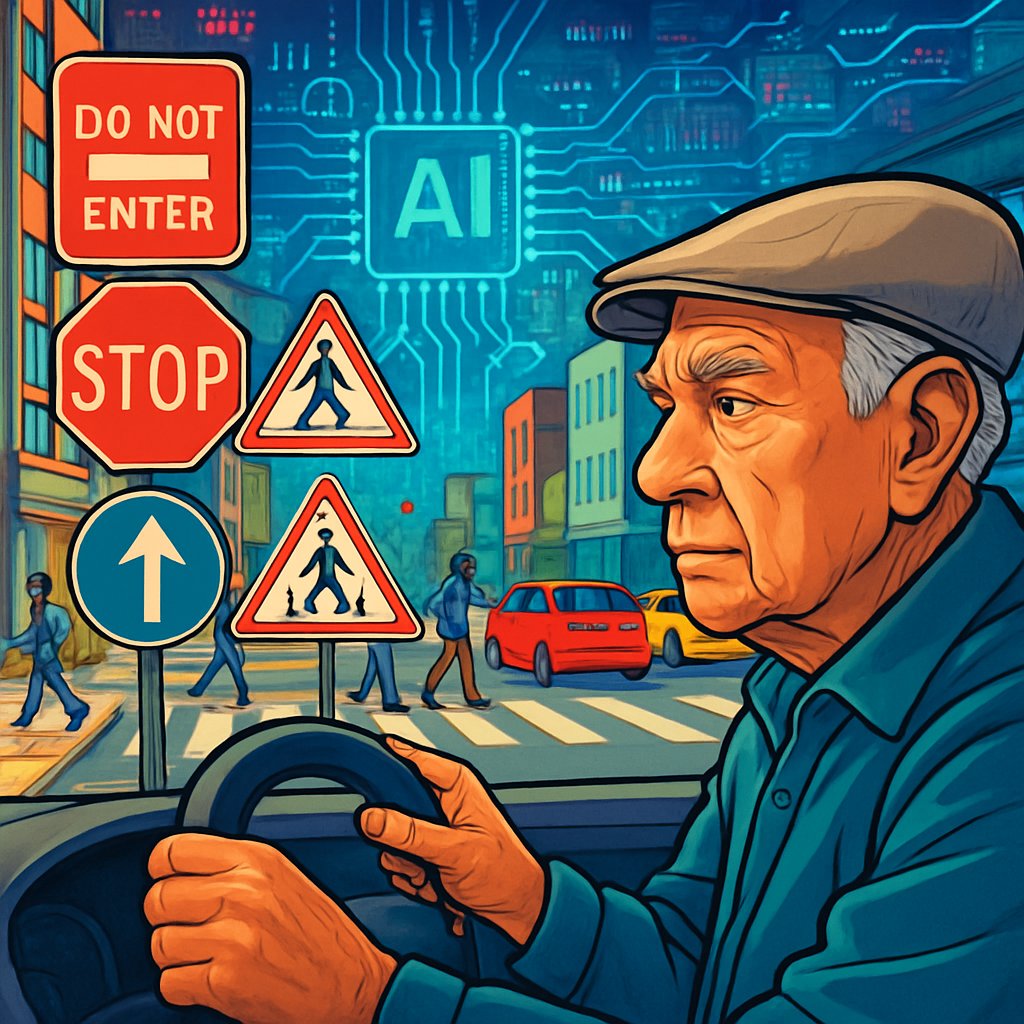Can AI Help Keep Senior Drivers Safe? Exploring Traffic Risk Assessments with Language Models
Driving is a part of everyday life for many people, but it can become a significant challenge as we age. With statistics revealing that older drivers are involved in over 60% of intersection-related crashes, understanding their driving abilities has never been more important. A recent study takes a fascinating dive into how large language models (LLMs), like ChatGPT-4o, can evaluate traffic scenes to help assess driving risks for the elderly. Buckle up as we break it down!
The Risky Reality of Driving for Seniors
Did you know that nearly 175,000 crashes happen each year at intersections? Scary, right? Drivers aged 65 and older are heavily represented in these statistics, facing a jeopardy that challenges their driving autonomy. The fatality rate for these accidents also sits at an uncomfortable 0.7%, which is on par with the overall average for traffic accidents. You can see why assessing the driving capabilities of this demographic is essential for not only their safety but also the safety of everyone on the road.
The ultimate goal? To provide these drivers with effective feedback about their driving, helping them navigate complex driving scenarios more safely. Historically, this feedback relied on subjective human judgments, but the study we’ll dive into explores how AI could automate this process.
Diving into the Research
What’s the Study About?
The research led by Yuki Yoshihara and colleagues sought to explore the capability of LLMs to interpret traffic scenes based on dashcam images. They focused on three critical tasks directly affecting elderly drivers—evaluating traffic density, assessing intersection visibility, and recognizing stop signs.
Unlike merely identifying objects (like whether a stop sign is present), these tasks require a nuanced understanding of context. For instance, a stop sign that’s sideways to the driver doesn’t pose a risk just as a car separated by a physical barrier doesn’t signify immediate danger. Here’s where the study comes to life: Can AI models, trained on vast amounts of data, provide insight into these intricate scenarios effectively?
Methods and Approaches
To uncover the potential of LLMs in this domain, the researchers extracted still images from dashcam videos taken during real-world driving scenarios involving elderly drivers. By utilizing the ChatGPT-4o AI model, they prompted it to assess features in these images that demanded a human-like level of judgment. They employed various prompting strategies—zero-shot, few-shot, and multi-shot—to analyze how these differences shaped the model's performance.
- Zero-shot prompting: The model was given a task description without examples, serving as an initial test of its capabilities.
- Few-shot prompting: One or two examples were included to guide the model on how to produce responses.
- Multi-shot prompting: Multiple detailed examples were provided for clarity and context.
Human Comparison
To verify how in-sync the AI was with human judges, the outputs of the AI were compared with annotations made by experienced drivers—two in this case—to see how closely they aligned with each other in terms of assessing traffic scenes.
What Did They Find?
Results in Action
The results were revealing:
- For intersection visibility, the model's recall improved dramatically; it jumped from a modest 21.7% (zero-shot) to 57.0% (multi-shot).
- Assessing traffic density showed a similar leap in agreement from 53.5% to 67.6%.
- High precision in stop-sign detection was notable, reaching as high as 86.3%, but with a lower recall of around 76.7%. This indicated that while the model was confident in identifying stop signs when it did, it was conservative in its judgments.
Notably, both humans and the model struggled with ambiguous scenes. This finding suggests that some situations might pose inherent challenges, regardless of intelligence—artificial or human.
The Role of Prompts
The study underscored an essential takeaway: Prompt design is everything. Prompting can significantly influence an LLM's performance when classifying scenes. The type of guidance provided—be it zero, few, or multi—leads to varying degrees of accuracy and confidence in predictions.
Challenges Remain
While the AI showed promise, it’s not all sunshine and rainbows. The researchers pointed out that the model missed some real risks during its assessments, underscoring the need for ongoing human involvement in critical tasks like determining the safety of driving conditions. Moreover, the dataset used was limited, consisting of just 200 images, which means the generalizability of these findings remains to be tested further.
Real-World Applications
So, how can these insights translate to real-world benefits? The potential applications are vast:
Enhanced Driver Feedback: Automated diagnostics for elderly drivers could lead to personalized advice on safety improvements in their driving.
Future Driver Training: Integrating AI assessments into driver training programs can make learning more tailored and potentially safer.
AI Companion for Drivers: Picture an AI assistant providing real-time feedback while driving—acknowledging risks, reminding about stop signs, and even suggesting when to yield.
Key Takeaways
Here’s what we learned from this fascinating study:
Traffic Safety for Seniors: There is an urgent need to focus on improving driving safety for elderly drivers as they face a higher risk on the road.
AI as a Helping Hand: Multimodal LLMs show promise in interpreting traffic scenes, supporting assessments of critical driving risk factors.
Importance of Prompt Design: How you prompt an AI model matters; tailored prompts can improve predictive capabilities.
Collaboration is Key: AI can serve as a valuable tool but should complement, not replace, human judgment in driving safety evaluations.
Limitations Call for Further Research: Future studies should expand datasets, compare varied AI models, and directly link AI performance to real driving behaviors.
As we venture further into the AI age, the intersection of technology, safety, and human behavior becomes increasingly paramount. The implications of this research click into place like a missing puzzle piece in our ongoing quest for safer roadways, especially for our elderly drivers. Here's to a future where technology makes driving safer for everyone!

